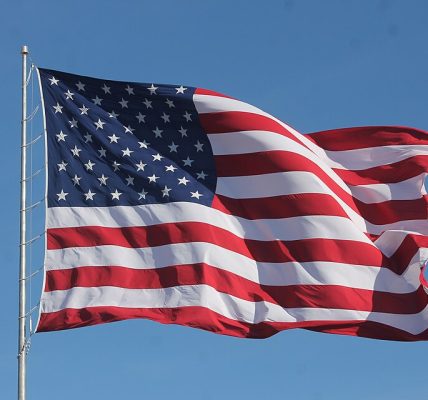USA Scholarship Visa Guide – The United States has long been one of the most popular destinations for international students seeking a world-class education.
With its diverse academic offerings, prestigious universities, and opportunities for research and personal development, the U.S. is home to many students from all corners of the globe.
However, for many prospective international students, the cost of education can be daunting, with tuition fees, living expenses, and other financial considerations often making studying in the U.S. seem out of reach. This is where U.S. scholarships come in: they offer an essential means of funding higher education.
Securing a scholarship in the U.S. is an important first step, but international students must also navigate the U.S. visa application process. Obtaining the appropriate study visa is crucial to pursuing education in the U.S.
This article will explore the different types of U.S. scholarships available to international students, the application process for U.S. scholarships, and the steps required to apply for a U.S. student visa. USA Scholarship Visa – Your Guide to Studying in the United States
Types of Scholarships for International Students in the USA
The U.S. offers a wide range of scholarships to help international students afford their education. These scholarships can be broadly categorized into the following types:
- Government-Funded Scholarships
The U.S. government offers several scholarship programs for international students. These scholarships are often competitive and target students from specific countries or regions. They are typically available for graduate-level studies, though some programs may also support undergraduate students.
- Fulbright Program: The Fulbright Program is one of the most well-known and prestigious scholarships offered by the U.S. government. It provides full funding for international students pursuing graduate studies, research, or teaching assistantships in the U.S. The scholarship covers tuition fees, living expenses, travel costs, and health insurance. The program aims to foster mutual understanding between the people of the U.S. and other nations.
- Hubert Humphrey Fellowship Program: This non-degree program offers young professionals from developing countries the opportunity to study in the U.S. for a year. The fellowship includes funding for academic studies, professional development, and cultural exchange. It is designed to enhance leadership skills and contribute to the development of the participants’ home countries.
- The U.S. Embassy and Consulate Scholarships: Many U.S. embassies and consulates around the world offer various scholarship opportunities to students from their respective countries. These scholarships are often specific to particular fields of study or academic programs and may cover partial or full tuition costs.
- University-Specific Scholarships
In addition to government-funded scholarships, many U.S. universities offer their own scholarship programs to attract talented international students. These scholarships can vary in terms of the amount of funding offered and eligibility requirements.
- Harvard University Scholarships: Harvard University offers several scholarships for international students, including need-based financial aid and merit-based awards. Harvard is committed to meeting the full demonstrated financial need of international students, ensuring that they can attend the university regardless of their financial background.
- Stanford University Scholarships: Stanford offers financial aid to international students based on need rather than merit. The university offers a variety of funding options, including the Stanford University Scholarship Program, which covers full tuition and living expenses for students who demonstrate financial need.
- Yale University Scholarships: Yale University provides need-based financial aid to international students, offering full funding based on the student’s demonstrated financial need. Yale follows a need-blind admissions policy for U.S. citizens and permanent residents, but for international students, financial aid is considered as part of the application process.
- Private Organization Scholarships
Numerous private organizations, foundations, and businesses provide scholarships to international students studying in the U.S. These scholarships may be awarded for academic achievement, leadership qualities, or community involvement.
- The Coca-Cola Scholars Program: This program offers scholarships to outstanding high school seniors in the U.S. and international students planning to attend U.S. universities. The Coca-Cola Scholars Program provides up to $20,000 for undergraduate studies.
- The Bill and Melinda Gates Foundation Scholarship: The Gates Millennium Scholars Program is a highly competitive scholarship aimed at high-achieving students from underrepresented backgrounds. This scholarship provides full funding for undergraduate and graduate studies at any U.S. university.
- The Joint Japan/World Bank Graduate Scholarship Program: This scholarship program is for students from World Bank member countries who wish to pursue graduate studies in fields related to development. The scholarship covers tuition, travel expenses, and living costs during the program’s duration.
- Merit-Based Scholarships
Merit-based scholarships are awarded to students who demonstrate exceptional academic achievement, leadership potential, or talent in a particular area. These scholarships do not take financial need into account and are highly competitive.
- The Marshall Scholarship: The Marshall Scholarship is a prestigious award given to students from the United Kingdom to pursue graduate studies at any U.S. university. The scholarship covers tuition, living expenses, and travel costs and is designed to strengthen the relationship between the U.K. and the U.S.
- The Rhodes Scholarship: While primarily associated with the University of Oxford, the Rhodes Scholarship also provides funding for students from around the world to study at prestigious universities in the U.S. The scholarship covers full tuition, living expenses, and travel costs.
- Field-Specific Scholarships
Field-specific scholarships are designed to support students pursuing studies in certain academic areas, such as science, technology, engineering, and mathematics (STEM), the arts, or social sciences. These scholarships are often funded by government agencies, universities, or private organizations.
- The AAUW International Fellowships: The American Association of University Women (AAUW) offers International Fellowships to women who are pursuing graduate or postgraduate studies in the U.S. The scholarships are designed to support women from countries around the world who aim to enhance their educational opportunities in fields where women are underrepresented.
- The Microsoft Research Women’s Fellowship: This scholarship supports women pursuing graduate studies in the field of computer science. The fellowship provides full tuition and a living stipend, along with the opportunity to work on cutting-edge research projects at Microsoft.
- Need-Based Scholarships
Need-based scholarships are awarded to students who demonstrate financial need. These scholarships are often provided by U.S. universities and cover a portion or all of the costs associated with studying in the U.S. USA Scholarship Visa – Your Guide to Studying in the United States
- The University of California (UC) Financial Aid: The University of California provides a variety of financial aid options for international students, including scholarships, grants, and work-study opportunities. Financial aid is typically based on the student’s demonstrated financial need.
- Columbia University Scholarships: Columbia offers financial aid to international students based on need. The university ensures that the full demonstrated financial need of admitted international students is met through a combination of scholarships, grants, and on-campus employment opportunities.
How to Apply for Scholarships in the U.S.
Applying for U.S. scholarships can be a detailed and time-consuming process. Below are some essential steps to help guide you through the scholarship application process:
- Research Available Scholarships: The first step in applying for scholarships is to research the opportunities available. Many universities offer their own scholarships, and there are various online scholarship databases, such as Scholarships.com and Fastweb, that allow students to find scholarships based on their academic background, financial need, and field of study.
- Check Eligibility: Carefully review the eligibility requirements for each scholarship before applying. Some scholarships are specifically for certain regions, academic disciplines, or types of students (e.g., undergraduate, graduate, or doctoral students).
- Prepare Application Materials: Scholarship applications often require a variety of materials, including:
- Academic transcripts
- Letters of recommendation from teachers or professors
- Personal statement or essay
- Curriculum vitae (CV) or resume
- Proof of financial need (if required)
- Apply for Multiple Scholarships: Given the competitive nature of many U.S. scholarships, it’s wise to apply for multiple scholarships to maximize your chances of receiving funding. Make sure to tailor your application materials for each scholarship to align with the specific requirements and objectives.
- Submit the Application: Submit your scholarship application before the specified deadline. Many scholarships require online submission through the university’s or organization’s website, while others may request physical documentation.
U.S. Student Visa Process (F-1 Visa)
In addition to securing a scholarship, international students must also obtain a student visa to study in the U.S. The F-1 visa is the most common type of student visa for those attending academic programs in the U.S. USA Scholarship Visa – Your Guide to Studying in the United States
Steps to Apply for an F-1 Visa:
- Apply to a U.S. College or University: Before you can apply for an F-1 visa, you must first apply to a U.S. institution and receive an offer of admission. Once accepted, the school will provide you with the necessary documents (Form I-20) to apply for the visa.
- Pay the SEVIS Fee: The Student and Exchange Visitor Information System (SEVIS) is an online database used by the U.S. government to track international students. You must pay the SEVIS fee before your visa interview.
- Complete the DS-160 Form: The DS-160 is the online non-immigrant visa application form. Complete the form and print the confirmation page for your visa interview.
- Schedule Your Visa Interview: After completing the DS-160 form, schedule your visa interview at a U.S. embassy or consulate in your home country. Wait times for visa appointments vary, so it’s important to apply well in advance.
- Attend the Visa Interview: During your visa interview, you will be asked about your academic background, the university you plan to attend, your financial situation, and your intentions to return to your home country after your studies.
- Receive Your Visa: If your visa application is approved, you will receive your F-1 visa, allowing you to enter the U.S. and begin your studies.
Conclusion
The combination of scholarships and a student visa is crucial for international students wishing to study in the U.S. Scholarships help alleviate the financial burden of studying abroad, while the student visa process allows students to live and study in the U.S.
By understanding the different scholarship opportunities available and following the necessary steps for obtaining a U.S. student visa, international students can successfully navigate the path to higher education in one of the most prestigious educational systems in the world.
The process may seem complex, but with thorough research, preparation, and organization, studying in the U.S. is an achievable and rewarding goal. USA Scholarship Visa Guide




